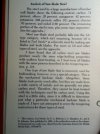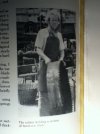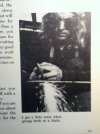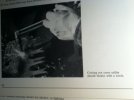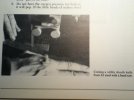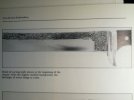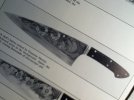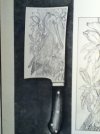-
The BladeForums.com 2024 Traditional Knife is ready to order! See this thread for details: https://www.bladeforums.com/threads/bladeforums-2024-traditional-knife.2003187/
Price is $300 ea (shipped within CONUS). If you live outside the US, I will contact you after your order for extra shipping charges.
Order here: https://www.bladeforums.com/help/2024-traditional/ - Order as many as you like, we have plenty.
You are using an out of date browser. It may not display this or other websites correctly.
You should upgrade or use an alternative browser.
You should upgrade or use an alternative browser.
What is old sawmill blade steel?
- Thread starter shqxk
- Start date
Hengelo_77
Basic Member
- Joined
- Mar 2, 2006
- Messages
- 6,193
if the teeth are carbide there is no need for the steel to be toolsteel
Stacy E. Apelt - Bladesmith
ilmarinen - MODERATOR
Moderator
Knifemaker / Craftsman / Service Provider
- Joined
- Aug 20, 2004
- Messages
- 37,721
David Boye was using band saw and other carbon steel blades. They are not the same as carbide tipped blades.
Also, I don't think he would appreciate his book being published on a forum without permission .... you might want to remove those photos. - Moderator
Also, I don't think he would appreciate his book being published on a forum without permission .... you might want to remove those photos. - Moderator
- Joined
- Oct 3, 2002
- Messages
- 12,297
May or may not be good knife steel. That said, most of the carbide tip blades I've used did harden and made good knives. But had a few carbide tipped blades over the years that were no good.
Willie71
Warren J. Krywko
- Joined
- Feb 23, 2013
- Messages
- 12,214
I’ve made a few blades when I started out from Freud saw blades and they hardened to RC55 or so. One generic saw blade ended up Rc27. I’m guessing the Freud blades were 1045 or 1050? (I tested old blades after I got a tester.)
Not worth the trouble unless you have an economical way of testing the steel.
The nickel content in the Boyle book is higher than any blades I’ve seen tested. Most are closer to 8670.
Not worth the trouble unless you have an economical way of testing the steel.
The nickel content in the Boyle book is higher than any blades I’ve seen tested. Most are closer to 8670.
Drew Riley
Knifemaker / Craftsman / Service Provider
- Joined
- Oct 17, 2007
- Messages
- 4,227
For $20, I'd buy the biggest one to hang on my shop wall, and then buy some known high carbon steel and make a good knife out of it.
Or buy two, hang one on the wall, and cut the other one up to play around and practice grinding on. There's a small chance that the main blade is made from a decent, harden-able steel that will make a decent, working knife, but as other's have mentioned, there's equal chance that it's a low to medium carbon steel that will make anything from a poor, to a just "ok" knife that needs to be sharpened every other cut.
Just keep in mind what you really want to do here. There's CONSIDERABLE more effort involved in parting up an old, dirty, rusted saw blade and then trying to turn it all into serviceable knives. You're talking about cutting it up, cleaning it up, spending hours experimenting with heat treats, (none of which may end up as the "ideal" treatment), you may have to still anneal it, unless you want to burn up countless drill bits, saw blades, grinding belts, etc..., and so on and so forth. Depending on what kind of tools you have available, this could all be simple, quick work, or take multiple hours, days, or weeks. Then there's still the questionable end result. When it's all said and done, are you still looking at a $20 investment, or did you burn up an extra $xx in tooling, and xx hours of your time, vs working with known, much more serviceable steel, at a slightly higher initial investment.
Or buy two, hang one on the wall, and cut the other one up to play around and practice grinding on. There's a small chance that the main blade is made from a decent, harden-able steel that will make a decent, working knife, but as other's have mentioned, there's equal chance that it's a low to medium carbon steel that will make anything from a poor, to a just "ok" knife that needs to be sharpened every other cut.
Just keep in mind what you really want to do here. There's CONSIDERABLE more effort involved in parting up an old, dirty, rusted saw blade and then trying to turn it all into serviceable knives. You're talking about cutting it up, cleaning it up, spending hours experimenting with heat treats, (none of which may end up as the "ideal" treatment), you may have to still anneal it, unless you want to burn up countless drill bits, saw blades, grinding belts, etc..., and so on and so forth. Depending on what kind of tools you have available, this could all be simple, quick work, or take multiple hours, days, or weeks. Then there's still the questionable end result. When it's all said and done, are you still looking at a $20 investment, or did you burn up an extra $xx in tooling, and xx hours of your time, vs working with known, much more serviceable steel, at a slightly higher initial investment.
Josh Rider
Stuff maker
- Joined
- Sep 2, 2014
- Messages
- 2,428
Just keep in mind what you really want to do here. There's CONSIDERABLE more effort involved in parting up an old, dirty, rusted saw blade and then trying to turn it all into serviceable knives. You're talking about cutting it up, cleaning it up, spending hours experimenting with heat treats, (none of which may end up as the "ideal" treatment), you may have to still anneal it, unless you want to burn up countless drill bits, saw blades, grinding belts, etc..., and so on and so forth. Depending on what kind of tools you have available, this could all be simple, quick work, or take multiple hours, days, or weeks. Then there's still the questionable end result.
This

I have a large 5ft across 1/4” thick one I bought. If you have access to a plasma cutter, it’s a different story, but I don’t. It ate up several angle grinder blades, had to be annealed and I lost interest when I decided this was a pain in the ass considering I barely get a lot of shop time as it is and I’m sitting on some annealed w2, 1075, and 1084 that’s ready to go. I’ll probably get back to it at a later time, but for now I’ll keep using known steel.
On the other side of the coin though, if you look at Don Hanson’s sawmill line of blades, you’ll see some awesome stuff.
And the fact that they were used in old sawmills and now they’re repurposed into useable tools is a pretty cool history and story to go along with them!
bike4fun919 OpbunchKnives
Knifemaker / Craftsman / Service Provider
- Joined
- May 5, 2014
- Messages
- 850
At one time there was six or eight saw mills running within miles of my house. When I first started making knives I made them out of old saw mill blades and luckily they made great blades. There was one fella that had a sharpening service who could install carbide teeth on old saw blades so just seeing carbide teeth didn't mean much at least around here. But one day I picked up a huge blade that didn't have carbide teeth so I spent a day or so and like knife to gunfight said spent lots of money on cutoff wheels etc and cut the entire blade up into knife size chunks. A lot of blood sweat, tears and money went into this effort as I was just sure it was awesome steel. Long story short it was worthless as I never could get a hardened piece of steel out of it. Kind of taught me a valuable lesson about using unknown steel. Can't say I wasn't warned though!
If I was to try unknown steel again I'd cut a small piece off first checking sparks and then heat treat to see what I had BEFORE I put a lot of effort into repurposing the steel. For me now I just order my steel.
If I was to try unknown steel again I'd cut a small piece off first checking sparks and then heat treat to see what I had BEFORE I put a lot of effort into repurposing the steel. For me now I just order my steel.
- Joined
- Dec 13, 2008
- Messages
- 2,986
I've got some that are 8670 and some that are basically 1080 carbon steel with a bit of alloy. I've seen a bunch spec'd the years and most of the old ones around here fall into one of those two categories. Though I've seen one spec out at plain 1090 carbon steel.
Hengelo_77
Basic Member
- Joined
- Mar 2, 2006
- Messages
- 6,193
David boye's book is what got me going
A good book but the world has changed a lot since he wrote his book. We can order modern materials in a small quantities with a few mouse clicks and find all the info we want on line.
A good book but the world has changed a lot since he wrote his book. We can order modern materials in a small quantities with a few mouse clicks and find all the info we want on line.
- Joined
- Oct 3, 2002
- Messages
- 12,297
Thanks bud! We've done real good with this line.On the other side of the coin though, if you look at Don Hanson’s sawmill line of blades, you’ll see some awesome stuff.
And the fact that they were used in old sawmills and now they’re repurposed into useable tools is a pretty cool history and story to go along with them!
Stacy E. Apelt - Bladesmith
ilmarinen - MODERATOR
Moderator
Knifemaker / Craftsman / Service Provider
- Joined
- Aug 20, 2004
- Messages
- 37,721
I remember one of the ABS guys (maybe Baton?) saying they are made from OS steel (old saw). He saw OS-1 isn't the same as OS-2 or OS-3. The first blade you find may harden, and the next ones may or may not.




